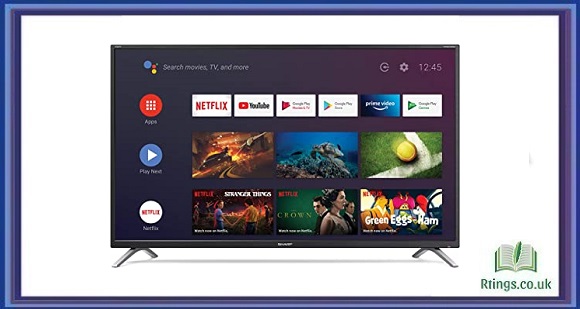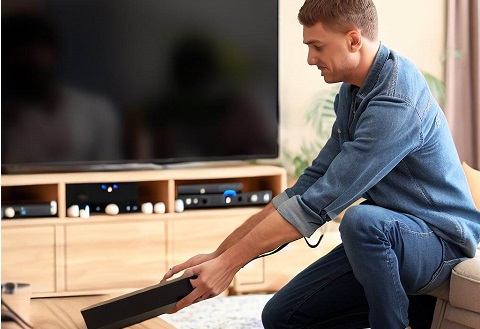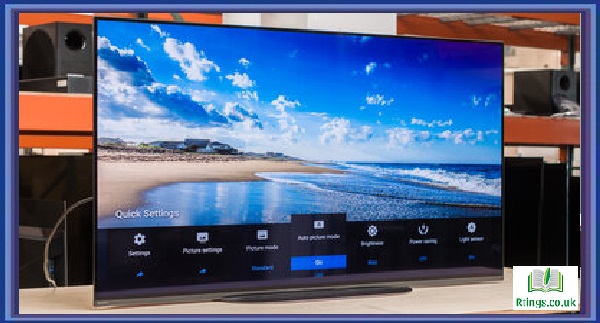Screen glare can significantly distract and cause eye strain, headaches, and fatigue. It can also make it difficult to see the screen clearly, especially in low-light conditions. Fortunately, several techniques can be used to reduce screen glare and make the viewing experience more comfortable.
Adjusting the Lighting in the Room
One of the simplest ways to reduce screen glare is to adjust the lighting in the room. If the room is too bright, try closing curtains or blinds to reduce the amount of natural light coming in. If the room is too dark, try turning on a lamp or adding a desk lamp to provide additional light.
Changing the Position of the Screen
Another way to reduce screen glare is to change the screen’s position. If the screen is positioned at an angle that causes glare, try adjusting the angle of the screen or moving the screen to a different location in the room.
Using an Anti-Glare Screen Protector
An anti-glare screen protector is a sheet of material applied to the screen to reduce glare. These protectors are available for most screens, including monitors, laptops, and tablets. They are easy to use and can be removed without leaving any residue.
Using a Matte Screen
A matte screen is a type of screen that has a special coating that reduces glare. These screens are available for most types of monitors and are a good option for those who spend a lot of time working on the computer.
Adjusting the Brightness and Contrast of the Screen
Adjusting the screen’s brightness and contrast can also help reduce glare. If the screen is too bright, try reducing the brightness. If the screen is too dark, try increasing the brightness.
Using a Hood
A hood is a device that attaches to the top of the screen and blocks out the light from above. This can be very effective in reducing glare from overhead lights or windows.
Taking Breaks
It’s also essential to take regular breaks from the screen. Staring at a screen for too long can cause eye strain and fatigue. Taking a short break every hour can help reduce glare and make the viewing experience more comfortable.
Conclusion
Screen glare can significantly distract and cause eye strain, headaches, and fatigue. However, several techniques can be used to reduce screen glare and make the viewing experience more comfortable. Adjusting the lighting in the room, changing the position of the screen, using an anti-glare screen protector, using a matte screen, adjusting the brightness and contrast of the screen, using a hood, and taking breaks can all help to reduce screen glare and make the viewing experience more comfortable.
Read More About best anti glare tv
Frequently Asked Questions (FAQs)
How do you reduce glare?
There are several ways to reduce glare:
Use window treatments: Installing blinds or curtains can significantly reduce glare from the sun. This is especially effective when the window treatments are made from a thick or heavy material that can block a large amount of light.
Use anti-glare filters: These filters can be placed over computer screens or other electronic devices to reduce the amount of glare. They work by scattering the light so that it is less intense and easier on the eyes.
Move the source of glare: Sometimes, the glare can be moved or repositioned to be less intense. For example, if the sun is shining directly into a room, closing the curtains or shades can reduce the amount of light that enters the room.
Use polarized lenses: Polarized lenses can be worn as glasses or used in camera lenses to reduce glare. These lenses work by blocking certain types of light waves, reducing the intensity of glare.
Use of Natural Lighting: Using natural light can be a great way to reduce glare. For example, instead of turning on the lights in a room, you can open the curtains or shades to let in natural light.
Add plants to rooms with large windows: Adding plants to a room with large windows can help to reduce glare. The leaves of the plants can act as a natural filter, reducing the amount of light that enters the room.
In summary, glare can be reduced by using window treatments, anti-glare filters, moving the source of glare, using polarized lenses, using natural light, and adding plants to rooms with large windows.
What causes screen glare?
The reflection of light causes screen glare off the surface of a screen. Several factors can contribute to this reflection:
The angle of the light source: If the light source is at a high angle, such as from a window or overhead light, it can create a strong reflection on the screen.
The surface of the screen: A glossy or shiny screen can create more glare than a matte or anti-glare screen.
The environment: Brightly lit rooms or outdoor environments can create more screen glare.
The viewing angle: If the viewer is positioned at a different viewing angle, they may experience more glare on the screen.
The screen resolution and size: Larger and higher resolution screens can reflect more light and create more glare.
The background color: Light background colors such as white or light gray will reflect more light than darker colors like black.
In summary, screen glare can be caused by the angle of the light source, the screen’s surface, the environment, the viewing angle, the screen resolution and size, and the background color.
How do I stop sun glare on screen?
There are several ways to stop sun glare on a screen.
Use window treatments: Installing blinds or curtains can significantly reduce glare from the sun. This is especially effective when the window treatments are made from a thick or heavy material that can block a large amount of light.
Use anti-glare filters: These filters can be placed over computer screens or other electronic devices to reduce the amount of glare. They work by scattering the light so that it is less intense and easier on the eyes.
Move the screen: You can move the screen to a location where it is not directly in the path of sunlight.
Use a hood: A hood can be placed over the screen to block out glare from the sun.
Adjust the screen’s angle: Adjusting the screen’s angle can also help reduce glare. For example, tilting the screen slightly downward can reduce the amount of light reflecting off the screen’s surface.
Use polarized lenses: Polarized lenses can be worn as glasses or used in camera lenses to reduce glare. These lenses work by blocking certain types of light waves, reducing the intensity of glare.
Use natural lighting: Using natural light can be a great way to reduce glare. For example, instead of turning on the lights in a room, you can open the curtains or shades to let in natural light.
In summary, sun glare on a screen can be reduced by using window treatments, anti-glare filters, moving the screen, using a hood, adjusting the screen’s angle, using polarized lenses, and using natural lighting.






